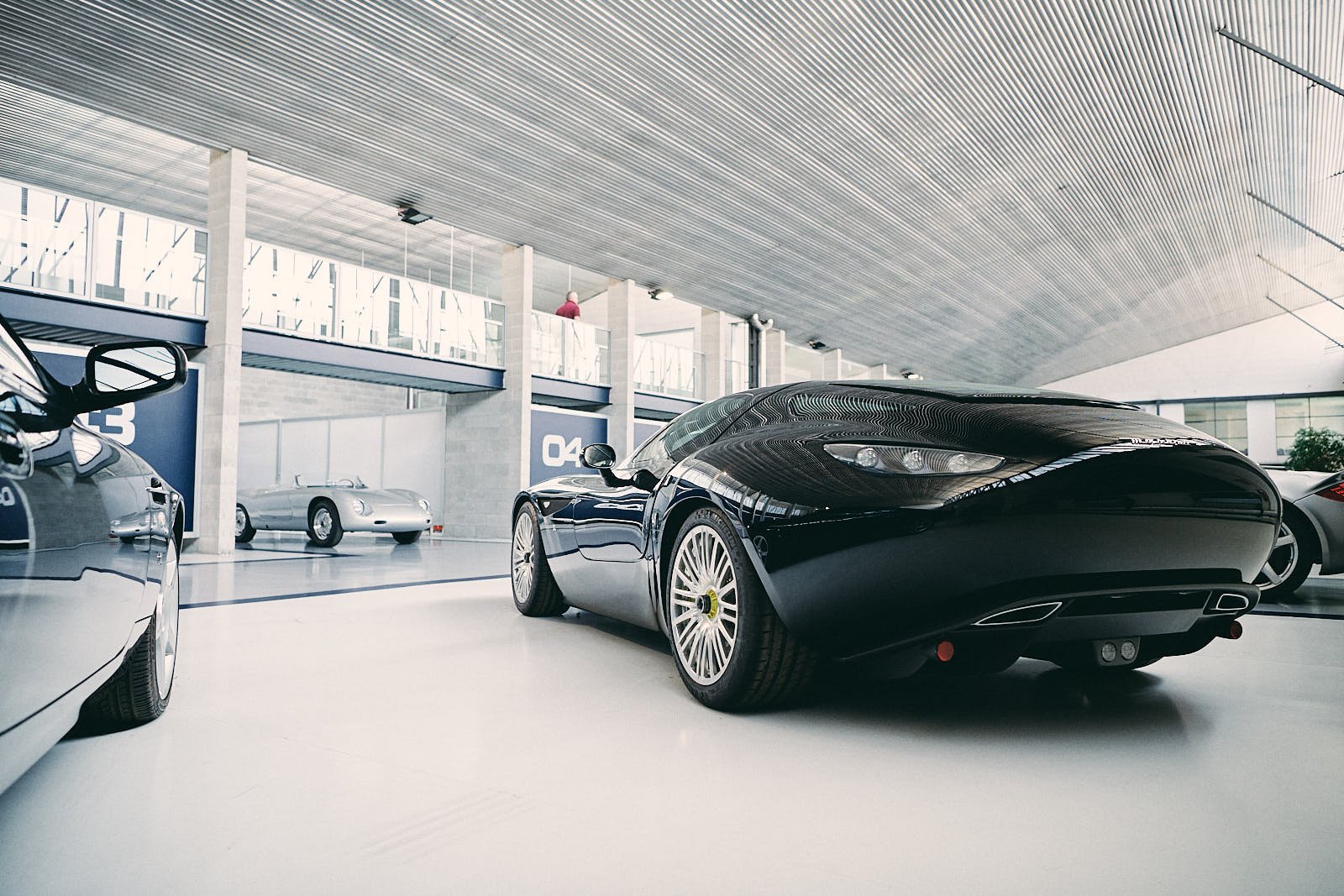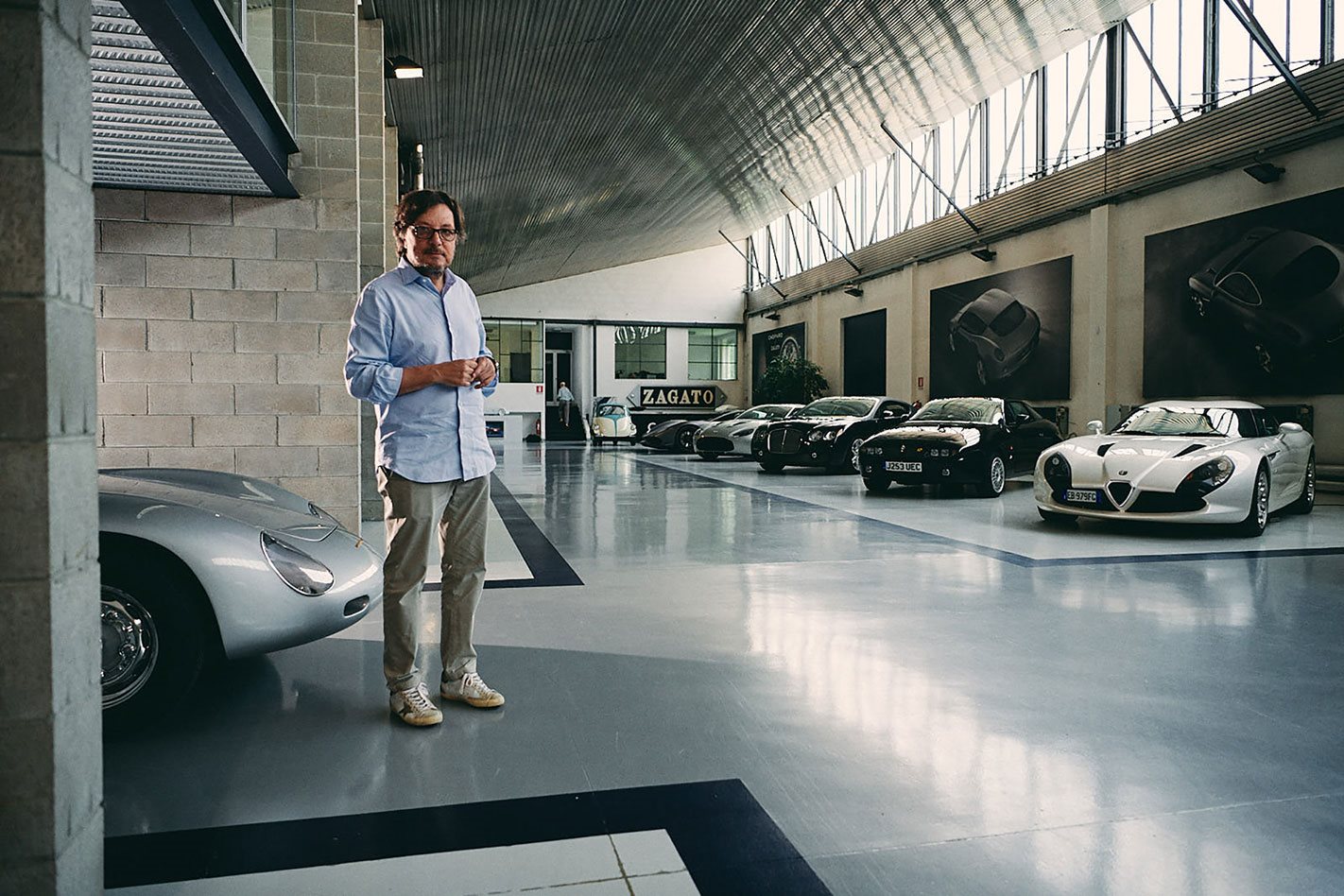OR A CITY that’s the self-proclaimed European capital of design and style, let’s just say that Milan doesn’t make its core attributes immediately evident. In the streets that feed out from the Stazione Centrale, Italy’s busiest (and presumably vision-impaired) graffiti bandit has barely left a wall or shopfront untagged. Dusty retail windows attempt to off-load random tatt, and the bins overflow into the gutters.
Sure, there’s a rich history of high-end labels and billion-dollar brands here, but you have to go looking for them.
Our journey takes us 20 minutes north-west to the suburb of Rho, but even here, Italy’s pre-eminent carrozzeria of automotive rebodying, currently celebrating its 100th anniversary, doesn’t instantly dazzle you with a glitzy marble and glass facade or elegant water features. Instead, you’ll find Zagato down a slightly scruffy back lane past a porcelain tile importer.
But when you turn past the reception area into the main atrium, all that is instantly forgotten. The sight of a handful of the company’s more significant models arrests your attention, various double-bubble roofs, sensual curves and voluptuous forms catching the morning light that filters through the glass ceiling that soars above the loft-style gangway.
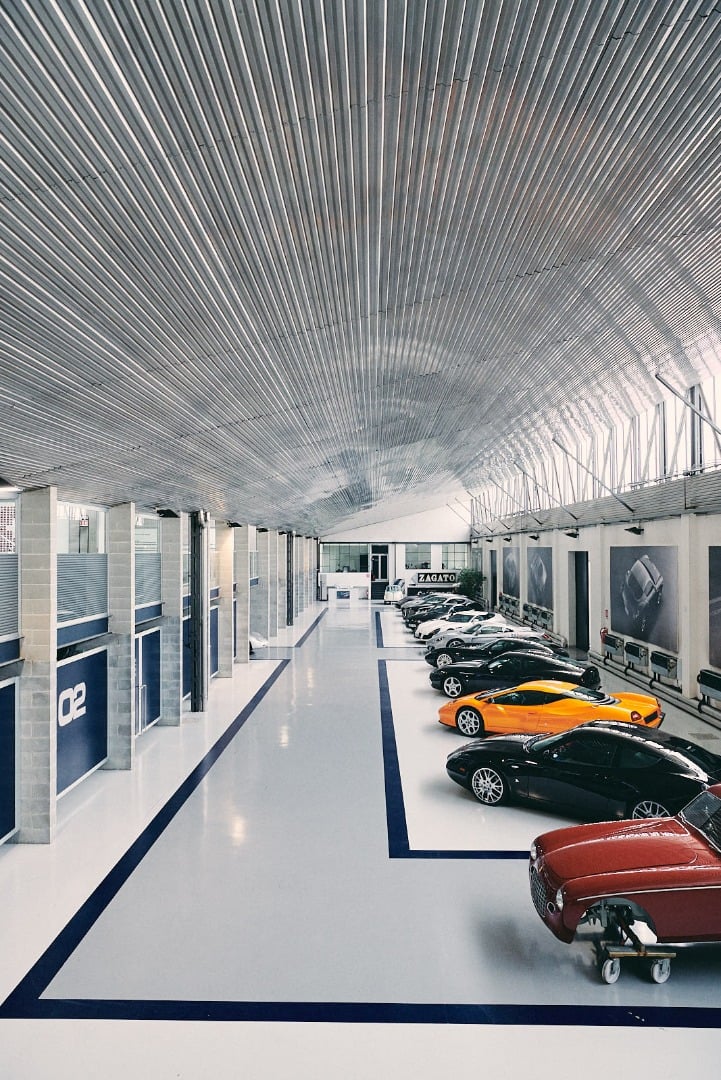
Andrea Zagato, grandson of founder Ugo, bounds up to meet us, a slightly rumpled bundle of energy and enthusiasm. He quickly apologises for the somewhat underwhelming building entrance. “The local council recently approved our application to reconfigure the access road,” he explains in accented but excellent English. “The next time you visit, you will arrive down Zagato Lane, and straight into a very impressive foyer section.”
Andrea has been running the company for nearly 27 years, and he knows his clientele well. They are partial to a flash facade, this money-no-object clique. Their passion for cars as art forms runs deep, and the rarer the better for when they whip the dust cover off at Pebble Beach, or perhaps Concorso d’Eleganza Villa d’Este.
Over a coffee, Andrea tells me the story of the company’s beginnings, and there’s a real sense of authenticity and engagement to the way he explains it, as if he’s sharing this story for the first time, not the 100th.
“My grandfather Ugo became famous for building horse chariots in a business of fabricators and coach builders. He moved into aircraft design and construction for WWI, and then turned towards cars. He was the first to apply aircraft design – light, simple, unadorned – to automotive. This was the beginning.
“He met Enzo Ferrari, he was recruited in the ’20s to build cars for Scuderia Ferarri; they were very successful. The cars were tube-frame construction covered by aluminium. Simplicity and light weight; this was his language. He went on to establish a factory, also doing many cars for Alfa Romeo, but it was bombed in the war. He lost everything. He had to start from scratch.”
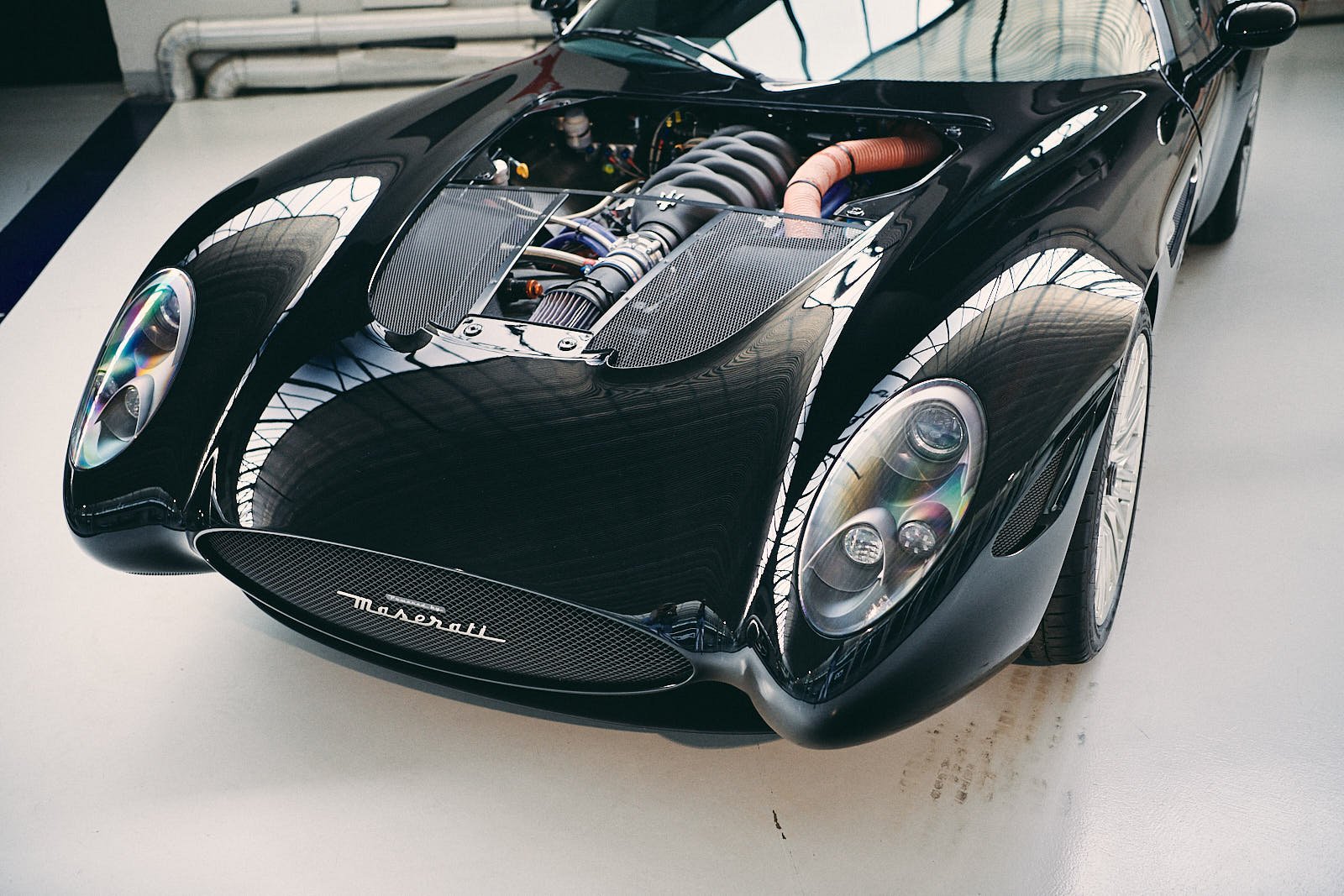
Andrea’s only real memory of his grandfather is being picked up and dropped off for school, around age eight, by a solemn gent. Not sitting on grandad’s lap learning to drive, or riding on his shoulders, or hand-rolling a cigarette for him. Yet his admiration for what his grandfather had achieved would later become a core motivator as he matured into adulthood.
Andrea’s father Elio was a handy Gran Turismo driver, a five-times champion, and his succession to the head of the company was never in doubt. Elio’s brother Gianni came on as technical director.
His father’s most significant business skills, Andrea tells me, were his networking and relationship building, forming partnerships with OEMs, and in test-driving the cars. He had a natural talent for finding ways to reduce weight and improve performance without compromising reliability and longevity.
Andrea majored in finance and business at Bocconi University in Milan, graduating as the 1980s began, ushering in heady days of high finance, global excess and wide-lapelled power suits. One of his first tasks, at the request of his father and uncle, was to perform a detailed analysis of the Zagato business. “I had to sit them down,” he says, “and deliver a very difficult truth: ‘Your company is dead’.”
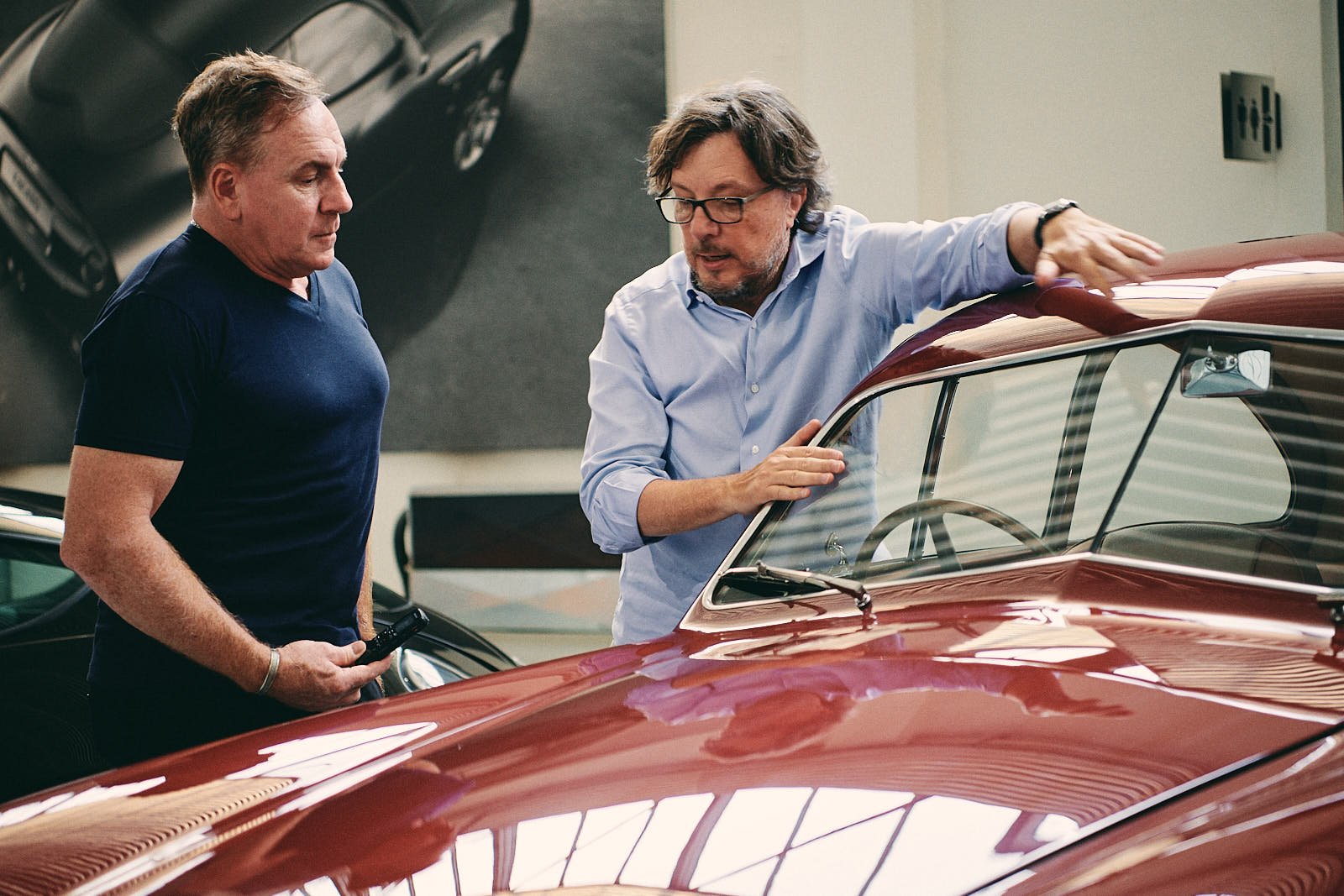
This was a period where manufacturers were quickly developing more flexible production for their variants of a single model, so it was obvious to Andrea that the OEMs’ need to outsource the building of niche models to Zagato was going to decline in the future. “My modelling indicated there would be no more of this for us in 10 years,” he says. “My father and uncle were well into their 60s. The thought of selling the company was not nice, but neither did they really know how to turn it around.”
Andrea already had a contract for a finance job in London, but said to his father, “If you need me to help you, I will.”
He was 25, and his father accepted his offer. The job in London was terminated, along with his deeper desire to one day study veterinarian science and care for animals. He was sanguine about these realties, and the more he looked into the business and the more he learned about what his grandfather had achieved, the more it became an obsession to not let it atrophy. “A sickness” is how he describes it.
“I discovered this company built more than 440 models for 44 different brands – the history was so huge, I felt I must do whatever I can to keep the company alive. I felt my grandfather was owed this recognition,” he says.
Before he could start on a reconstruction of the company – at that stage it was a production business, with assembly lines and paint shop – he had to undertake difficult deconstruction work, stripping back capacity and overseeing a raft of job redundancies.
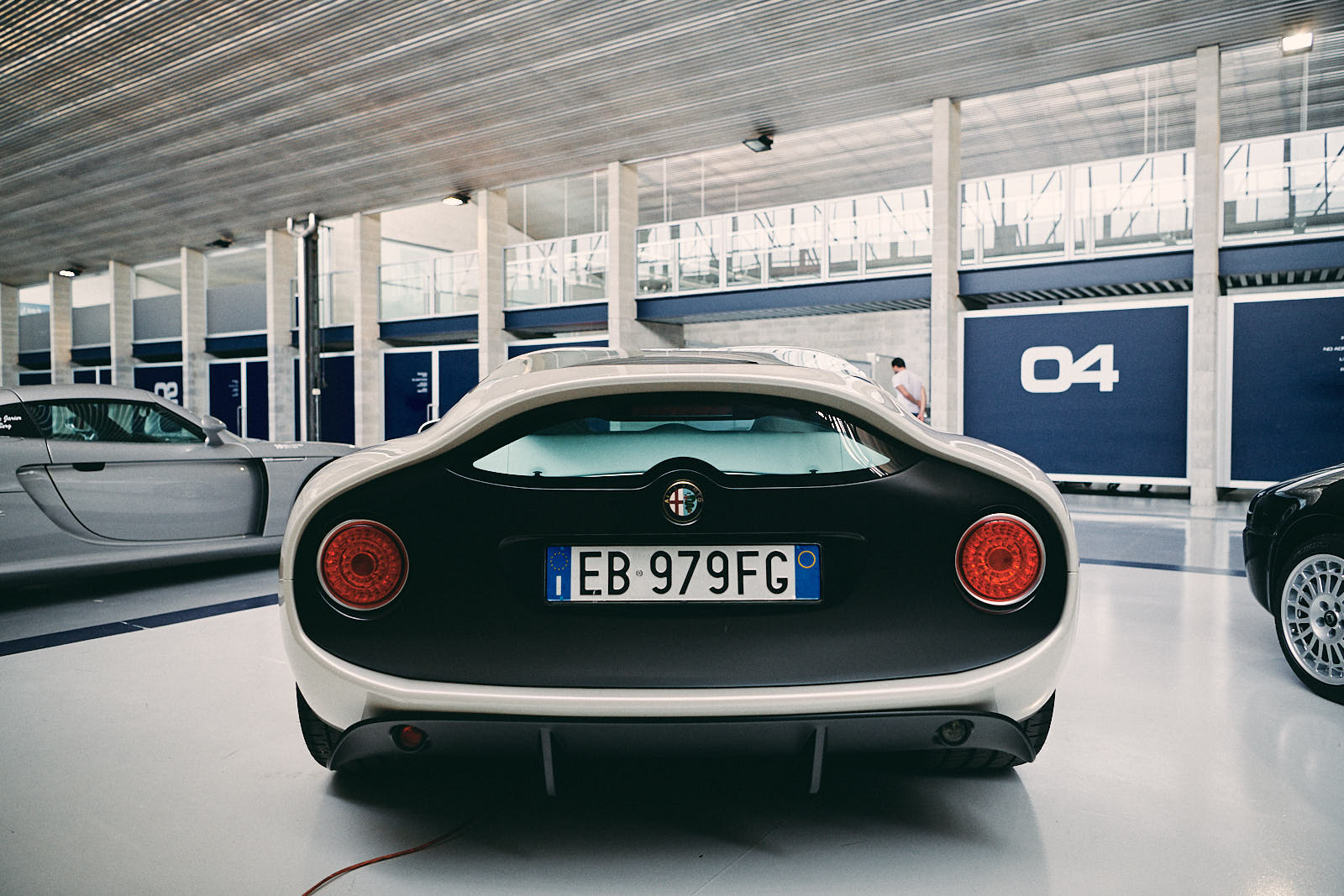
“I decided to [transition] the company into a design and engineering operation,” Andrea explains. “Around 1985, CAD/CAM was really coming on. I said to my father, ‘This is how we must reshape the company. We can continue to build unique and special creations for our most enthusiastic customers, but we need to be an advanced specialist of computer-aided design and engineering. And not just for cars, but for the nautical industry as well.’”
Some companies were astonishingly slow to join the revolution. Like Lamborghini, for example. According to Andrea, even in the early ’90s, the supercar specialist barely had a computer to its name. “I went there once with a floppy disk in hand; there was nowhere to plug it in,” he says, shaking his head.
“We later discovered the Diablo was around 20mm asymmetrical left to right. CAD/CAM allowed you to be precise; really raise quality. The first car we did was the Alfa SZ in the late ’80s. We were selling our service in CAD hours in this period – our boat clients, for example, would come with drawings, and we would turn these into CAD files.”
By the mid-’90s, Andrea felt the time was right to refocus serious attention back to the area of special editions. “In 1995 I was in Pebble Beach as a judge, I was 35. It was my realisation that the value of the cars there had very little to do with the restoration, or the cost of materials. It was all about the history, the rarity, the provenance of the car. I discovered that through a certain period, all the Zagato cars were more valuable than all other cars from design houses. It made me realise this incredible market for Zagato. I figured the time was right to return to that area: niche, collectible, for the concourse market.”
This strategy was perhaps best exemplified some years later with the Aston Martin DB7 Vantage Zagato, unveiled at Pebble Beach in 2002. The company’s collaboration with Aston dates back to the ’60s (see sidebar); this one, timed for the end of regular DB7 production, called for a run of 99 cars. “We didn’t have a facility to do it,” says Andrea. “I said to Aston, ‘Why not produce them on your flexible production line?’
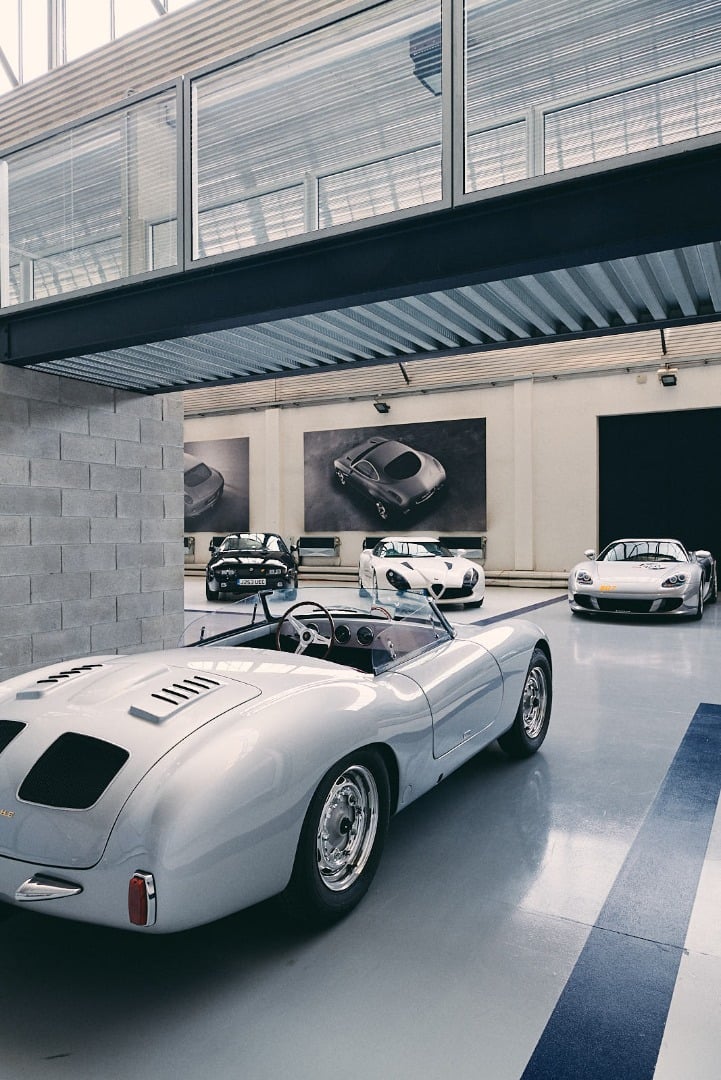
“We provided the design, the components, the Zagato signature. It worked; the Aston bosses were happy, the workers at Gaydon were happy, the unions were happy.”
Andrea breaks briefly to chat to a couple of clients; two men in their late 40s. They’re casually dressed in chino shorts and designer loafers, with obligatory high-end watches. They’re here to drop Sydney waterfront apartment money on a one-of-a-kind Porsche. It’s this sort of private, bespoke, commission-based work that also contributes to the Zagato bottom line.
The company has never had any trouble hiring top design talent. The lauded Ercole Spada, perhaps best known for his stint as BMW’s chief designer from 1976 to the early ’80s, joined Zagato in 1960, and is widely credited as designing the sublime Aston Martin DB4 GT Zagato. I’m slightly stunned when corrected on this by Zagato PR Diana Grandi: “The DB4 GTZ was actually designed by Gianni [Zagato] and Celeste Zoppi. Ercole was only an apprentice in 1960 and he couldn’t have done it anyway as he was away most of the year on sick leave and to finish his military service.”
These days, the design department of some 40 staff is headed by Japanese-born design director Norihiko Harada, who’s been with the company for an astounding 25 years. Physically pocket-sized, the softly spoken, flamboyantly stylish Nori, as everyone calls him, clearly has a deep understanding of the design language that’s helped sustain the company for 100 years, as well as an uncluttered, elegant sense of aesthetic that’s very much his own.
He talks me around the exterior of perhaps the most free-ranging, unconstrained design he’s produced in his time at Zagato: the IsoRivolta Vision Gran Turismo concept revealed at the 2017 Tokyo show. Despite the plunging curves and dramatic proportions, he’s at pains to explain the simplicity in the way the basic shapes intersect. He puts it in terms I completely understand: “When a man tries to woo a woman, some can talk a lot, use many words,” he says quietly. “But sometimes you can do it with just a single word that is very strong, passionate. So often my style reflects this type of approach.” Bellezza necessaria (‘essential beauty’) is how the Italians describe it.
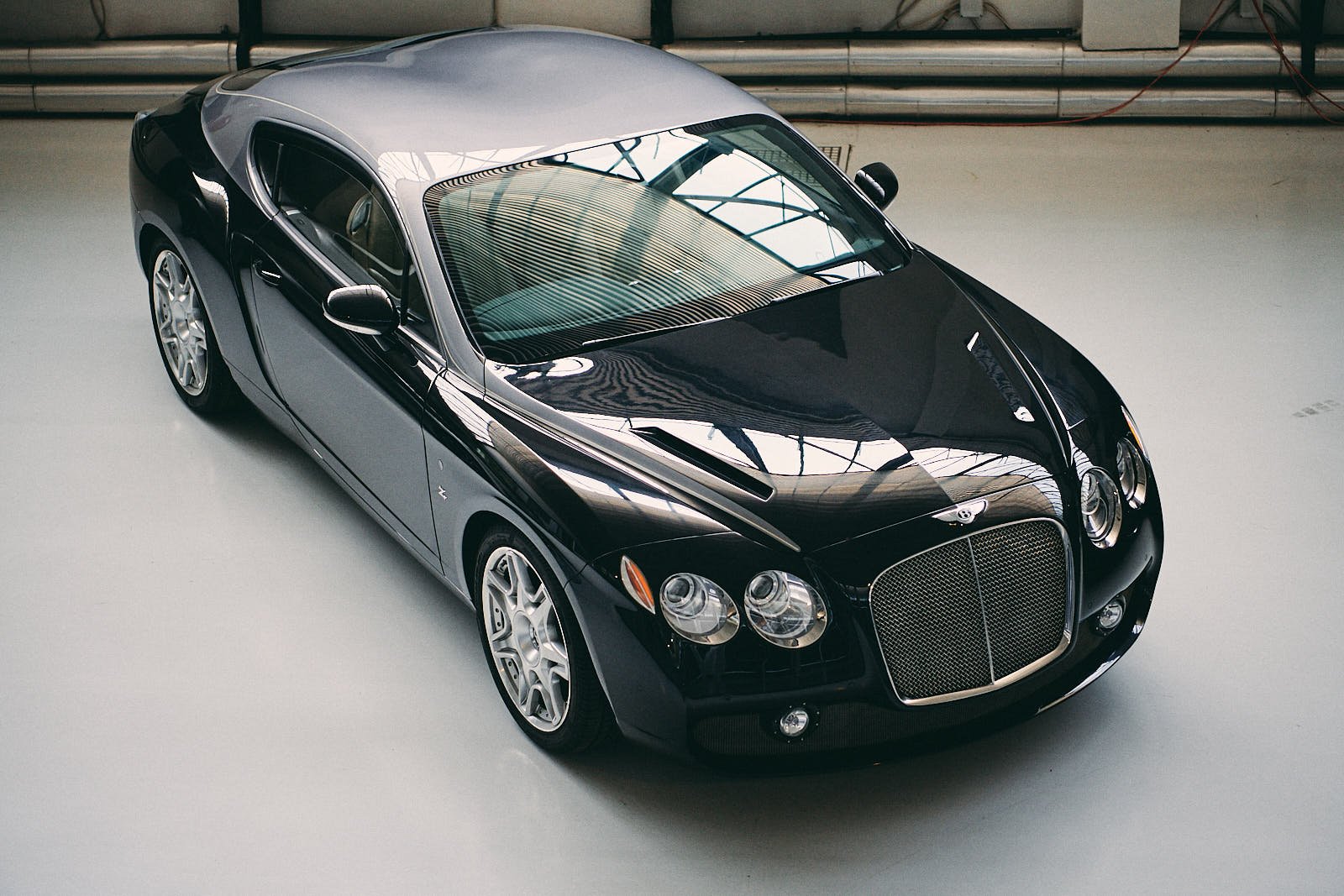
The Vision Gran Turismo was built for the virtual world – it’s available on PlayStation’s Gran Turismo – but there are now ambitions for a small production run, probably with an electric powertrain.
I’m permitted a peek in the workshop, but strictly no photography. All the fabrication and bodywork happens here, but paint and trim is outsourced to nearby specialists. It’s not exactly a hive of activity – a couple of workers are discussing football over an espresso – but there are some intriguing projects under construction. The most noteworthy is based on a contemporary front-engined V12 Ferrari, and its folding soft top would seem perfectly suited to an Italian summer alps blast, the sound of that glorious engine cannoning off rock faces and screaming near 9000rpm on a tunnel strafe. Its carbonfibre panels are raw and still need more hand-finishing, but it’s set to be a jaw-dropper of a car when it surfaces at an unspecified concours d’elegance in 2020.
The Lamborghini 5-95, based on the Gallardo LP570-4 Superleggera and commissioned by big-time collector Albert Spiess, is here but I’m not sure it actually advances the tensioned wedge design of the original.
I’m far more taken with the Maserati Mostro out in the main display space, which also happens to be one of Andrea’s personal favourites. It was built to celebrate Maserati’s centenary in 2014, and manages that duplicitous trick of appearing both fearsome and utterly gorgeous at the same time. Andrea points proudly to the rear end: “The back section here is all one single piece. There are no seams, no joins,” he tells me. “This is the sort of detail that separates us from the way mainstream production models are designed and built.”
Wheels’ own Peter Robinson, a design aficionado, has had a long association with Zagato, so I email him with a request to share a few thoughts. “While living in Italy, I visited the company every couple of years,” Robbo replies. “I even drove some of their low-volume production cars. In 1992, [wife] Erica and I drove an Alfa ‘Il Mostro’ SZ from our home in the north of Italy to Sicily and back to learn about the Targa Florio circuit with three-time Targa winner Nino Vaccarella. A trip to savour – we drew crowds whenever we stopped. Remarkably, all the Italian enthusiasts we met knew it was from Zagato.”
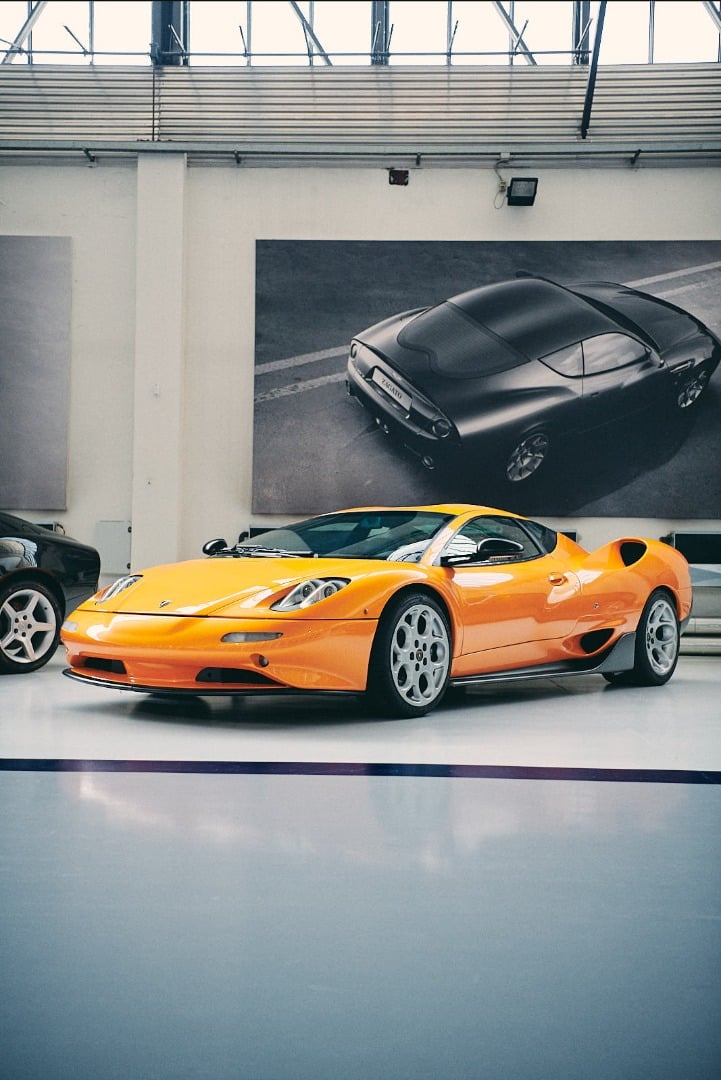
I ask Robbo to name a few of his favourite Zagato cars. “The Alfa 1750 6C Zagato: the perfect vintage sports car – classic proportions, beautiful detailing, entirely functional. Then there’s the Aston Martin DB4 GTZ. A masterpiece; elegant, beautiful and successful on the racetrack.”
Robbo and I both agree that there have been a few Zagato designs that missed the mark, or failed to improve upon the original. Says Robbo: “Yes, the Nissan Bambu Zagato, Zagato’s 300ZX – far uglier than the original. Or the Alfa Zeta 6 of 1983, Zagato’s copy of a Porsche 928.”
“Unfortunate” is Robbo’s concise summation.
We drive a short distance to lunch in Andrea’s BMW 630d Gran Coupe. “A beautiful design by Nader Faghihzadeh. I sent him a note to congratulate him,” he says as we jump in.
At the table in the bustling trattoria, Andrea tells me one of his priorities right now is to reboot the IsoRevolta brand. He’ll do it via a run of 19 rebodied C7 Corvettes, inspired by the Grifo A3/C that won its class at Le Mans in ’64 and ’65, and built by German race-car constructor HWA. He plans to sell them for €770,000 (A$1.2m) each. I’m curious as to how he arrived at this figure. “Do you take the cost to design and produce the car and then add the necessary margin? Or just charge what you think the market will pay?” I ask.
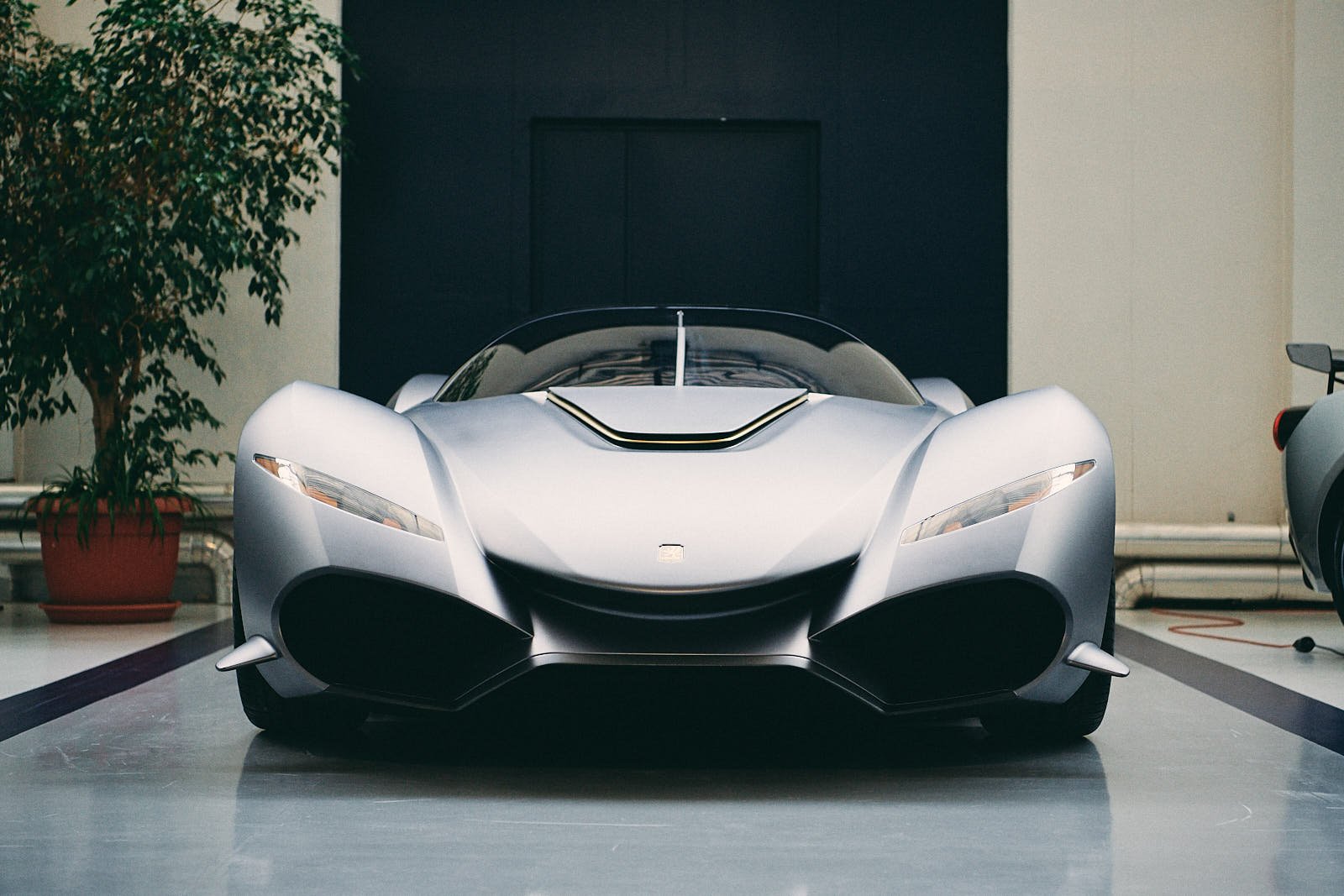
“I could charge more,” he says, cryptically, “but I want the clients to see a quick upside in value. That keeps them happy.”
Andrea and his wife have no children, so there is no immediate succession plan. But on the subject of children, he tells me he was around 12 when he first started coming to these headquarters regularly after school and in his holidays. Back then, the company responded to the ’70s oil crisis by building an electric city car called the Zele. Young Andrea drove a hack around the lanes flanking the building. “It was unbelievable; super exciting,” he says. “So light; instant acceleration…”
When the lease is up on his BMW, it’s likely he’ll replace it with an EV for his daily 45-minute trip from his lake house on Lake Maggiore. He says he’s tempted by the instant torque, near-zero NVH, and single-gear smoothness in traffic.
“So you will have come full circle,” I suggest. “From a boy, not even a teenager, driving an electric car at work, to a 60-something man, now also driving an electric car at that same work.”
He smiles. “I hadn’t thought about it that way, but yes, I would say it’s true,” he says. He reflects for just a moment. “Yes, a very … how you say … virtuous circle.”
